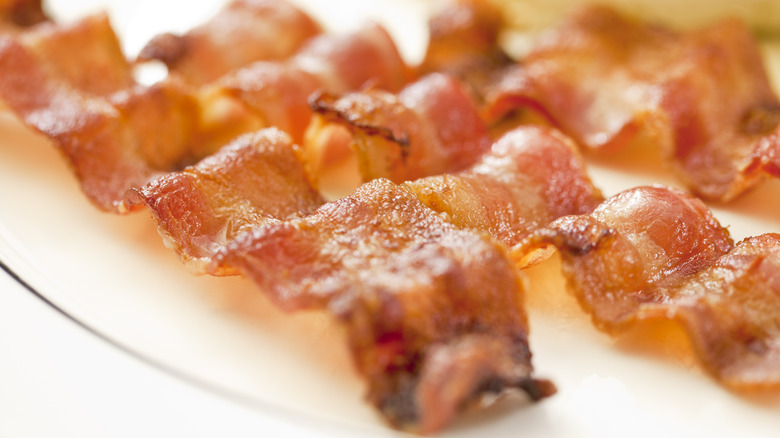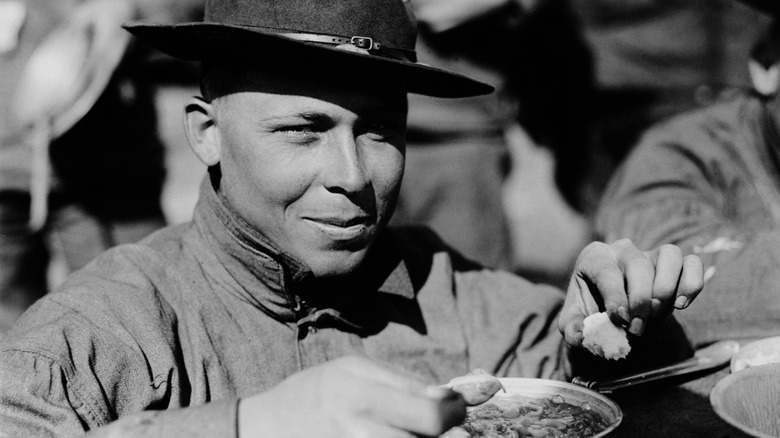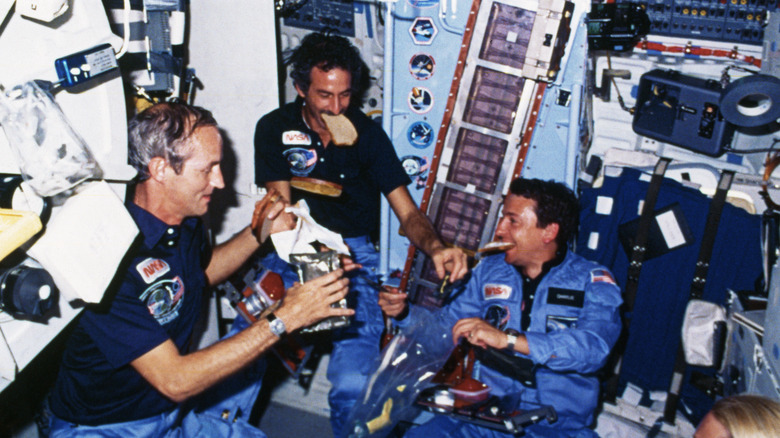Canned Bacon Has Survived Warfare, Space, And More
In 1914, when the arctic explorer Ernest Shackleton began preparing for what turned out to be a harrowing and disastrous two-year expedition to reach the South Pole, among the provisions he and his crew took with them were nearly 1,500 pounds of canned bacon. During the voyage that included their ship being trapped in ice and crushed, Shackleton and his men took refuge in their meals amid slowly dwindling food supplies.
Shackleton wasn't the only person to crave that salty, smoky comfort food. There's a scientific reason why bacon tastes good with everything: Umami, saltiness, and fat, which makes it a food item like no other. Besides Antarctica, canned bacon has endured two World Wars and outer space only to become relegated to the shelves of survivalists and others focused on emergency preparedness. But once, canned bacon was a widely available food item popular during a time when food safety and preservation was in its infancy .
Canned bacon through the years
Today, we have the advantage of refrigerators and freezers to keep our bacon around longer. In fact, that fresh package of bacon in your fridge can last, if opened, about a week. But before artificial refrigeration came along, preserving food was a real challenge. Commercial bacon production began in the 1770s in England, but it took the indefatigable work of a Frenchman, Nicolas Appert, who spent nearly a decade and a half perfecting the art of canning meat and other perishable foods at the turn of the 19th century, to make it possible for the birth of canned bacon. While it's unclear who first sold this product, by 1876,"tinned bacon" was being advertised for sale in the Australian newspaper The Sydney Morning Herald. By 1909, the American company Swift Meats was selling jarred bacon, promising potential customers that each slice was perfectly prepared.
By World War I (1914 to 1918), canned bacon had become standard rations for soldiers, although the product didn't win any prizes. One British soldier recalled it being "cold and greasy" (via the Imperial War Museum), and it remained equally unpopular during World War II. The U.S. Army made strides to improve the taste of canned bacon for its soldiers through a new method that prevented the fat in the bacon from yellowing, which was found to be unappetizing.
Canned bacon went to outer space in 2016
The first meal eaten on the Moon included bacon. But the Apollo 11 crew's lunar breakfast was dehydrated bacon squares rather than what we earthbound eaters are used to. While it may not sound all that appetizing, the astronauts were happy to have this taste of home. By 2015, astronaut fare had improved a bit. British astronaut Tim Peake from the European Space Agency worked with U.K. celebrity chef Heston Blumenthal on the meals he would be consuming during his stay on the International Space Station, including a canned bacon sandwich.
Blumenthal had a hard time creating the sandwich because of restrictions related to space travel like no bread crumbs and a mandatory two-hour cooking time at 284 degrees Fahrenheit to kill off any potential bacteria. "It looked disgusting, I have to say, but it tasted delicious," Peake told the Chris Evans Breakfast Show of his canned bacon sandwich. "And the smell!" While canned bacon has quite a history, it's no longer ubiquitous, but is still available as emergency rations, with Yoders being a popular brand in the U.S. In Japan, the snack company Kokubun makes canned bacon with different flavors including honey mustard — it's a far cry from where canned bacon first began.


